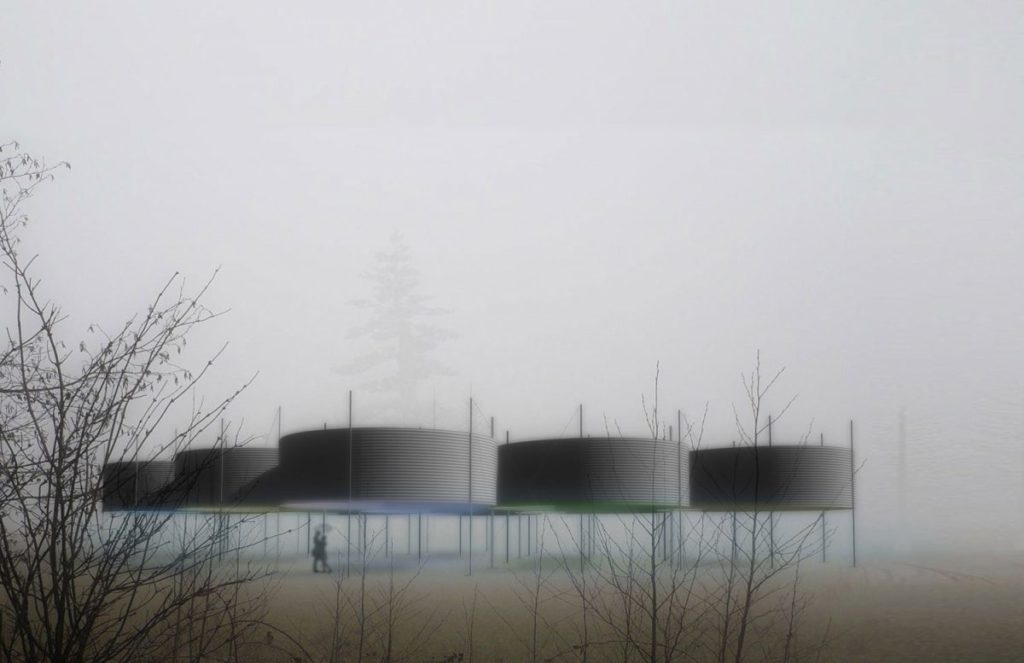
FIGMENT has teamed with the Emerging New York Architects Committee (ENYA) of the American Institute of Architects NY Chapter (AIANY) and the Structural Engineers Association of New York (SEAoNY) to host a competition to design and construct an architectural pavilion in Lighthouse Park on Roosevelt Island, the City of Dreams Pavilion. The 2019 pavilion will be the ninth City of Dreams Pavilion and the first on Roosevelt Island.
2019 Theme
The City of Dreams Pavilion will be a gathering place for people to meet, learn about the arts programs on Roosevelt Island, take in a performance or lecture, and enjoy this temporary structure. Our theme for the pavilion, the City of Dreams, points toward the future. If we imagine a future New York City where anything is possible, what would it look like? In our wildest and most optimistic dreams, what is the future of the city?
The current state of the world is such that both economic and natural resources are limited and unequally distributed. A new way of thinking is necessary to solve these problems. Inevitably, the result will be a change in the basic practices that have driven the world to its current state. One place to start to activate and energize these changes is within the architecture and design community, where the movement toward sustainable design has only scratched the surface of what is possible and necessary.
The 2019 City of Dreams Pavilion Design Competition will be a two-stage process, in which a jury of leading architects and other industry professionals will review initial submissions and select several finalists. These finalists will receive comments and will have the opportunity to revise their proposals. The jury will meet again and select the competition winner in January 2019.
Essential requirements of the proposal
Instead of a typical design competition, the City of Dreams Pavilion asks entrants to consider how they will construct this temporary structure in the most efficient and sustainable way possible. Entrants should consider the entire lifecycle of building materials in their submission. Whether they do this by identifying companies that produce “cradle-to-cradle” products, garnering sponsorships from environmental or socially conscious groups, or re-using waste from construction sites, the materials and the installation process should have as little impact as possible on the environment.
Entrants should submit how they plan to source materials, how their structures will be transported to the site, how they will eliminate waste during installation, and how they plan to disassemble and reuse the materials after the Roosevelt Island site closes for the season. In other words, entrants are being asked to consider using “borrowed” materials—from existing construction sites and from places where the materials can be returned after the structure is disassembled.
In the end, the goal is to create a pavilion that has a net zero impact and that serves as a prototype for a new, truly sustainable way of thinking about design and construction.
comments